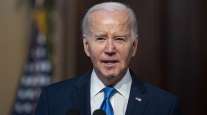FMCSA Silent on Plans for EOBR Rule; Agency Could Restart Process Entirely
This story appears in the Oct. 3 print edition of Transport Topics.
More than five weeks after a federal appeals court threw out a 2010 federal electronic onboard recorder rule, Federal Motor Carrier Safety Administration officials remain silent about whether they will restart the regulatory process outright with a new proposed rule, or issue a supplementary rule.
Either way, it seems unlikely that the agency will be able to meet a June 2012 EOBR deadline for an estimated 5,700 carriers with significant hours-of-service violations.
The decision by the 7th U.S. Circuit Court of Appeals, which chided FMCSA for failing to ensure that the devices won’t be used to harass truck drivers, also could push back agency plans to finalize by mid-2012 a proposed EOBR requirement for all interstate carriers.
In its Aug. 26 decision, the appeals court agreed with the Owner-Operator Independent Drivers Association that FMCSA did not thoroughly consider driver harassment when it issued a final remedial EOBR rule that was set to take effect in July 2012, nor with an EOBR mandate for all interstate carriers proposed earlier this year (9-5, p. 1).
Some executives of EOBR manufacturers characterized the appeals court decision as unclear and viewed it as an attempt by OOIDA to slow down the rulemaking process.
“I saw the decision and my first reaction was ‘I don’t get it,’ ” said Brian McLaughlin, executive vice president and chief operating officer for EOBR maker PeopleNet.
“An EOBR in its core form — which is just meant to manage hours of service — actually can do more to protect a driver than it can to harass a driver,” McLaughlin told Transport Topics. “It gives a driver a defensible position to say, ‘I can’t do these things that you may be forcing or asking me to do’.”
Tom Cuthbertson, an Xata Corp. vice president who is responsible for the company’s regulatory affairs, said that even absent a mandate, there already are more than 350,000 EOBRs deployed in the trucking industry.
“The drivers I talk to feel they can manage their time better and they think it helps them control fatigue,” Cuthbertson told TT.
One hypothetical situation the agency might need to address was raised earlier this year during oral arguments before the appeals court by Paul Cullen, a Washington, D.C., attorney representing OOIDA.
Judges credited Cullen with offering a “plausible example” of driver EOBR harassment.
In Cullen’s example, a truck driver might stop to take a two-hour break because he is too tired to use up the three hours of driving time he has remaining.
“The carrier gets on the Qualcomm and tells him ‘get out of bed, you’ve got three hours of driving time left,’ ” Cullen told the court. “That’s harassment.”
That scenario also would currently be a violation of federal regulations, according to FMCSA. If it actually happened, a motor carrier could face a fine of up to $75,000, said Rob Moseley, a transportation attorney based in Greenville, S.C.
FMCSA has a drivers’ hotline to report such instances. In addition, drivers can file formal complaints with the Occupational Safety and Health Administration any time a motor carrier forces them to violate hours-of-service rules.
But Todd Spencer, exe-cutive vice president for OOIDA, scoffed at the notion that driver harassment is a priority issue for law enforcement or for regulators.
“Basically, if the truck stops, the carrier wants to know why,” Spencer told TT. “And if a driver’s got any time at all left to run, they want him using it regardless of whether or not the driver may need to stop and rest.”
OSHA records show that only a handful of the more than 50 various harassment complaints drivers filed with the agency in recent years have been resolved in the driver’s favor. Most are dismissed or settled out of court.
OOIDA said in legal filings that the organization’s members have re-ported other ways that carriers use EOBRs to harass drivers. They include:
• Demanding that a driver manually designate on-duty-not-driving time as off-duty in the EOBR.
• Using the device to wake drivers when they are resting in the sleeper berth.
• Suddenly requiring a driver’s attention to the EOBR device while he is driving.
Although EOBR use is primarily intended to monitor and comply with hours-of-service regulations, there are no prohibitions against using the devices for productivity-related purposes — which could include maintaining contact with drivers, monitoring driver pro-gress, determining delivery and work schedules, and even requiring drivers to return to duty, so long as the drivers would not be put in violation of the hours or other regulations, according to FMCSA.
But Bill Vickery, a spokesman for the Alliance for Driver Safety and Security, said it would be “counterproductive at a time when you’re trying to hire drivers to use a safety tool to harass a driver.”
The alliance comprises several large motor carriers whose fleets are largely equipped with EOBRs and are lobbying Congress for an EOBR mandate.
“If, indeed, a company was haras-sing a driver, there would be an actual, objective electronic log to show how efficiently the driver had been using his time,” Vickery said. “It actually works more in the driver’s favor.”
“Obviously, any number of hypotheticals can be posed. But I don’t think you’d find a great deal of evidence that there are a lot of driver harassment issues at all,” Vickery added.



